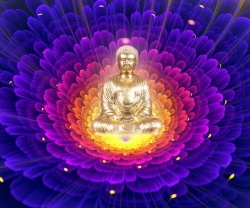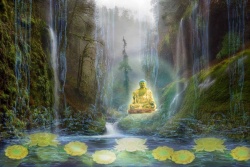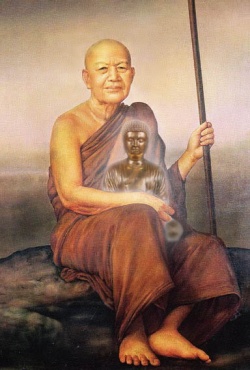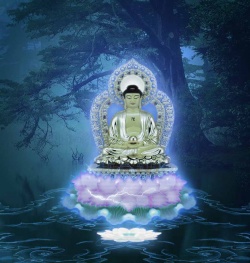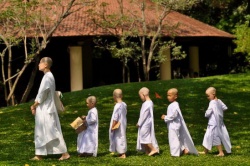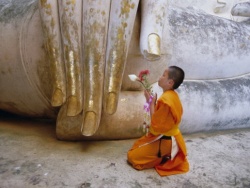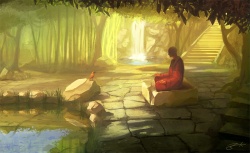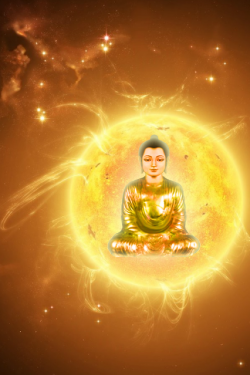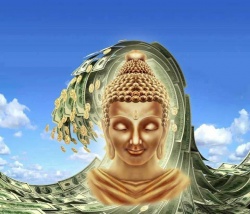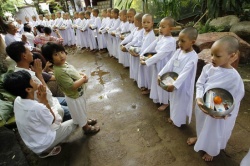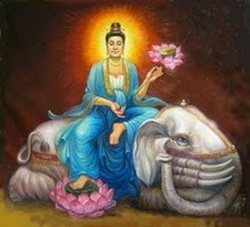Re-Examination—The Modernisation of Buddhism by Ven. Dr. Chang Qing
Re-Examination: The Modernisation of Buddhism
Ven. Dr. Chang Qing
Assistant Professor
Buddhist College of Singapore
Abstract
Due to modernisation every aspects of our life are vastly transformed from an old traditional generation to the present day new modern generation. Let's put aside the advantages and disadvantages that such development would bring, what we are concerned with today is how to integrate Buddhism into the modernisation of the society. Needless to say, modernisation has definitely improved our standard of living. Similarly, in order for Buddhism to propagate and survive in the modern world, we have to adjust our methodology to stay relevant with the present society. There are scholars who had advocated that Buddhism could be modernised via methodology in order to propagate Dharma to benefit sentient beings. In this paper, I would like to re-examine the concept of modernisation in Buddhism from doctrinal perspective. For instance, I will emphasize the thought that practising the Bodhisattva path such as the Four Embracing Virtues (giving, affectionate speech, beneficial conduct and working together) is similar to the idea of modernised Buddhism. It appears that there is no obstruction or paradox for disseminating Buddhism in the modern world. In other words, the manner for propagating the Dharma could be modified to synchronize with the pace and trend of the new generation. Bearing in mind that the Buddha's spirit could not be altered simply to attract the young generation. This could be achieved through the use of skillful means. In view of this, I would like to debate that the Buddhas teachings had actually incorporated the notion of Modernisation. Hence, it is legitimate to note that modernisation was in harmony with Buddhas teachings rather than vice versa. Most importantly, I wished to highlight that modernisation is not a new concept rather it had already existed in Buddhism for more than 2500 years ago. Finally, I advocate that to spread the Dharma widely and effectively, there are seven areas that we could consider modernizing in spreading the Buddhism and there are definitely no contradiction with the Dharma.
Keywords: Modernisation, Truth, Middle Path, Skillful Means, Two Truths, Emptiness, Impermanent.
In this age of technology, due to modernisation every aspects of our life are vastly transformed from an old traditional generation to the present day new modern generation. All these changes will no doubt affect our life in one way or another. Let's put aside the advantages and disadvantages that such development would bring, what we are concerned with today is how to integrate Buddhism into the modernisation of the society. The change is unavoidable so we should embrace rather than challenge and oppose the phenomenon. We have to admit that modernisation offers abundant comfort and convenience in our everyday life when we go about performing our daily chores. These include living condition, food, sanitation, transportation and etc. Advanced technology had certainly improved the quantity as well as the quality in all these areas. For instance, the ever changing fashion, creation of new exotic culinary experiences and well designed houses with modern facilities had obviously make life easier but unfortunately at same time more complicated. With new invention and innovation, like the bullet train and A380 aeroplanes transportation had taken to a greater new height that men could possibly ever dream of. In this contemporary world, with advanced IT technology, communication through satellite and the Internet had made the information flow much faster that ever before, almost instantaneously and to every remote corners of the world with a touch of a keystroke. Hence, communication with one another is made faster and easier but no doubt had become very impersonal too. The mode of communication now is either through emails or SMS texting via computers or mobile phones. No one seems to want to write letters or talk anymore. Physical and geographical distance no longer exist – we are so closed and yet so far. Through all these modern invention, the world has become an “earth village”. People around the world are more interconnected to each other than ever before. Needless to say, modernisaton has definitely improved our standard of living. In terms of urbanisation, the new outlook of the buildings in the modern world are entirely different from the traditional ones. These changes also provide us with more advanced facilities, comforts and conveniences. It seems that adjustment to the old concept of traditional buildings is unavoidable. Hence, this will progress in tandem with the pace of the modern development.
So, what is Buddhism? In a nutshell, Buddhism is Buddha’s education. Cited from the Agama sutra, it illustrated: “Stopping evil and doing good. Purifying our own mind. This is regarded as Buddhism.” [1] The sutra emphasised that the main focus is on "Purifying our own mind." We could be in another time, space and dimension, but we could still practise Dharma with a pure mind in our daily life. In fact, this is the fundamental essence in Buddhism. Often enough, we are being asked: “What is cultivation in Buddhism?” Cultivation of the mind is the central focus in Buddhism.
Many hold the view that Buddhism is lofty and sublime, a teaching so profound that it could not be practised by ordinary men and women in this modern world. It was perceived that if one desires to become a true Buddhist, then it is either to retire to a monastery or to some remote and solitary place faraway. Walpola Rahula in his book entitled “What the Buddha taught” expressed: “This is a sad misconception, due evidently to a lack of understanding of the teaching of the Buddha. People run to such hasty and wrong conclusions as a result of hearing, or reading casually, something about Buddhism written by someone, who, as he has not understood the subject in all its aspects, gives only a partial and lopsided view of it.” [2] Evidently these interpretations are either written or said by someone who did not fully grasp the actual teaching by Buddha intelligently. True renunciation is not running away physically from the modern world. In the Uddesa-vibhanga Sutta (An Analysis of the Statement) of the Majhima-nikaya, the Blessed One said this to the monks: “A monk should investigate in such a way that, his consciousness neither externally scattered & diffused nor internally positioned, he would from lack of clinging/substance he would be unagitated, there is no seed for the conditions of future birth, aging, death, or stress.” [3] In this Nikaya, the Buddha pointed out that the "pure-mind" is more superior than outside environment The common belief that to follow the Buddha's teaching diligently, one has to retire from the worldly materialistic life which is a misconception.
In Buddhism, it was always mentioned that "Dharma cannot be at odds with worldly life." In this mundane world, humans could not leave the community and live alone- no man is an island. Every generation is different in many ways from the previous generation. We cannot impose or even expect the same set of values or standards that would be passed down from generation to generation. For example, the level of education and exposure had become increasingly higher for every generation. Nowadays, if you throw a stone, most likely it would land on a university graduate. So likewise, Buddhism has to progress in parallel with every new generation. Every new generation will bring forth new challenges in our attempt to propagate Buddhism. In many of his great works and addresses, Master Tai-xu constantly reiterate terms such as "Modern Chinese Buddhism", "Modern Chinese Sangha system", "Modern Sangha education" etc. [4] Master Yin-Shun in his commentaries also advocated "in accord with capacity of sentient beings and teachings of Humanistic Buddhism." Obviously, this implied that Buddhism has to mondernise before it could be ready for the contemporary world. These two great masters clearly reminded us the importance of modernisation of Buddhism. The reason for Master Tai-xu's suggestion was partly due to his observation of his generation. This group of people, maybe due to lack of education and exposure, was both superstitious and conservative. They are fearful of the unknowns and rely on the power of ghosts, spirits and even gods for their hopes and dreams and instead neglected the human race. Hence, Master Tai-xu proposed "Buddhism in Human life." Similarly, Master Yin-shun was influenced by his teacher and advocated "Humanistic Buddhism." The distinct difference between the two masters was that Master Yin-shun not only suggested that Buddhism should be practised by ordinary people, but also stated further that cultivation of the mind should be accomplished in the human world.
Although Master Tai-xu and Master Yin-shun did mention the crucial concept of modernisation of Buddhism, it appeared that both of their propositions were rather vague and did not clearly indicate that Buddha teachings did encompass the idea of “Modernisation”. The founder of Fo Guang Shan Master Hsing-Yun also suggested the notion of “Modernisation” and he even went further to expound on such idea and incorporate with the present modern world.[5] However, Master Hsing-Yun still did not highlight that Buddha teachings had actually included the idea of “Modernisation”. Professor Lai Yong-Hai also raised the question about how Buddhism could be modernised and he proposed that modernisation of Buddhism should merge into the mundane world and human life. [6] It seemed that Professor Lai realized that the significance of modernisation of Buddhism. Unfortunately, he did not clearly emphasise and elaborated on the concept of modernisation in Buddha’s teaching. Japanese Zen Master Akizuki Rymin said: “As for me, I wish only to be remembered as a monk who went to weddings but not to funerals. I have no desire for a “funeral” after I die. I would simply ask that my immediate disciples and family lay me to rest with a chanting of the Heart Sūtra and the Sankry, and a session of zazen for the time it takes to burn a single stick of incense.” [7] It seemed that Akizuki Ryamin did not like a funeral as we know a traditional funerals is superficial and complicated. Hence, he preferred modern style funerals and weddings. Needless to say, Akizuki Rymin tried to imply that Buddhism should adjust its methodological approaches in order to link up with the modern world.
As stated above, we knew that scholars were mainly proposing on modernisation by using methodological approaches but overlook the analysis of the doctrine. Very often, people want to embrace the modern approach but fear of against the teaching. They struggle and are too intimidated to face the challenges. Hence, I proposed to rationalize that we should re-study the doctrine also and not focused on the methodology alone. The Dharma which encompassed the notion of modernisation are as follow:
1. Truth
As we know, the Truth had always been present regardless of the existence of Buddha and it was beyond time, space and dimension. In other words, the Truth could emerge at any place and time. Undoubtedly, the Truth refers to Dharma body. [8] Although Buddha had already attained Nirvana, but his Dharma body = Truth still continue to exist in different generation. Hence, there was no obstacle or paradox for disseminating Buddhism in the modern world.
2. Expedient Means
The concept of “Expedient Means” was crucial in Mahayana Buddhism. Burton Watson in his translation of the second chapter of “Expedient Means” in the Lotus Sutra and read: “Shariputra, ever since I attained Buddhahood I have through various causes and various similes widely expounded my teachings and have used countless expedient means to guide living beings and cause them to renounce their attachments. Why is this? Because the Thus Come One is fully possessed of both expedient means and the paramita of wisdom” [9] Here, the Buddha had used countless expedient means to benefit sentient beings and it seemed that “countless expedient means” could be considered as Buddha’s methodology go beyond time and space. According to the Lotus Sutra, Buddha not only used expedient means but also incorporated the concept with wisdom as well. In other words, expedient means had to be guided by wisdom. With regard to expedient means, John W. Schroeder said; “The Perfection of wisdom (Prajñāpāramitā) sūtras place it alongside prajñā, or “wisdom” and the eminent Madhyamika philosopher Nāgārjuna witnessed it as the “father” of bodhisattvic activity: Prajñāpāramitā is the mother of Bodhisttvas, skill-in-means is the father, and compassion is the daughter (Lindtner 1986, p.128.” [10] In comparision, wisdom was indeed more significant than expedient means. Nevertheless, wisdom and expedient means could be regarded as one entity. Since expedient means are expounded beyond time and space, it was legitimate for us to say that it could be used for different generations and it had to be connected with wisdom. It meant that in whatever we attempted to deal with had to be conducted with wisdom. Therefore, it was very essential that we must fully understood the doctrine in order to generate wisdom. Needless to say, expedient means bring forth the idea of modernisation and it could be used in the modern world. With expedient means, modernizing Buddhism is achievable.
3. The Middle Path
In Mahayana Buddhism, practicing the Bodhisattva path is compulsory before one could attain Buddhahood. One must obtains a compassionate mind before bringing benefit to others. Therefore, one who practice Bodhisattva path had to be engaged with the modern world. The Bodhisattva spirit is liked “a lotus which will never be tainted by dirty swamp.” Although the presence of Bodhisattva in this contemporary world was to render assistance to the unfortunate, but at the same time would not be easily tempted by the worldly materialistic comfort. Hence, Bodhisattva could manifest in different generations to benefit sentient beings. It was because Bodhisattva had unaffected pure-mind and the needs to appear in the present world to help individuals with their problems. For this reason, Bodhisattva could manifest in different forms and various environments to alleviate the suffering of sentient beings. Logically speaking, practicing the Bodhisattva path was similar to the idea of modernized Buddhism. In fact, practicing the Bodhisattva path was akin to fulfillment of the Middle Path. The definition of Middle Path was neither existence nor non-existence and was beyond the two extremes. [11] With regard to the Middle Path, Paul L. Swanson quoted from the Middle Treatise (Zhong-Lun), it read:
“All things which arise through conditioned co-arising.
I explain as emptiness 空。
Again, it is a conventional designation 假名。
Again, it is the meaning of the Middle Path 中道.” [12]
If we analysed the verse and equated with modern generation, the first line referred to modernisation which arose through causes and conditions (“Dependent Origination”). The present modern world could take the form of traditional or modernised Buddhism would therefore be dependent on different causes and conditions. For this reason, all things are impermanent and the idea of modernisation would be varied due to changing of time and space. Hence, “dependent Origination” did comprise the notion of modernisation.
With regard to the second line, Swanson said: “”Emptiness” means the lack of substantial Being, not only the absence of anything which exists in and of itself and never changes, but also an eternal essence.” [13] In other words, all substances in the modern world were not substantial due to the nature of emptiness. It occurred to me that emptiness was not restricted by time and space but rather existed at any time and any place. It was because the nature of all things were empty and transient. It could be transformed either from tradition to modernization or vice versa. Hence, it was legitimate to say that emptiness embraced the idea of modernisation.
The third line of this verse referred to since all things which arose through causes and conditions were due to nature of emptiness, it was therefore merely a conventional existence. This implied that the term “modernization” was solely a conventional designation. Swanson said: “Our phenomenal world has temporary reality in the sense of an integrated, co-arising, interdependent relationship of causes and conditions. This was known as “conventional existence”.” [14] Since all things in the world were provisional names regardless of “modernisation” or “tradition”, we should not cling on and impede the spreading of the Dharma.
The fourth line of this verse was to highlight the meaning of the Middle Path which comprised dependent origination, emptiness and conventional designation. Swanson said: “The Middle Path means to take a course between two extremes. Two possible extremes are the affirmation of substantial being on the one hand (“eternalism”), and nihilistic denial of all existence on the other (“annihilationism”).” [15] It appeared to me that Swanson’s explanation of the Middle Path had definitely taken dependent origination, emptiness and conventional designation into consideration. When we spoke of the Middle Path in the modern context it was in some way insinuated that we followed the trend of modern style for the sake of Buddhism but not for the purpose of modernisation. Therefore, the Middle Path goes beyond tradition and modernisation.
In other words, the Middle Path was at the absolute level rather than relative level. For this reason, the Middle Path referred to modernisation incorporated with the Buddha teaching. If modernisation did not keep to the Buddha teaching, then it could not be regarded as Middle Path. Obviously, the Middle Path encompassed the notion of modernisation. Their relationships are illustrated as follows:
4. Impermanence
In Buddhism, Buddha believed that all things were dependent on causes and conditions and were because of the nature of emptiness. They were fleeting and impermanent. Things would not be permanently emerged into the phenomena and it was subjected to changes. In the Da –Zhi-Du-Lun, it said: “All the conditioned dharma are impermanent and attribute to arising and ceasing. This is considered as causes and conditions.” [16] According to the Treatise, all things were impermanent and dependent on causes and conditions to exist in this world. In other words, the theory of impermanent could be applied to different generation. For this reason, spreading of Buddhism cannot be fixed to one place, time and method and it had to be relevant fort different environment. Needless to say, impermanent also implied the notion of modernisation.
5. The Two Truths
With regard to the Two Truths, Professor Paul Williams quoted the Madhyamakakārikā and wrote: “The doctrine of the Buddhas is taught with reference to two truths-conventional truth (lokasav•tisatya) and ultimate truth (paramārthasatya). Those who do not understand the difference between these two truths do not understand the profound essence (tattva) of the doctrine of the Buddha. Without dependence on everyday practise (vyavahāra) the ultimate is not taught. Without resorting to the ultimate, nirvana is not attained. If emptiness is coherent then all is coherent. If emptiness is not coherent then likewise all is not coherent.” [17] According to my understanding, conventional truth equated with tradition and modernisation and ultimate truth referred to emptiness which was the true reality. The ultimate was taught for the sake of practising the Dharma in the modern world. Hence, conventional truth could be considered as worldly dharma and ultimate truth was regarded as world-transcending dharma. In Buddhism, when we spoke of world-transcending dharma, it meant that it used the worldly dharma as a platform and transcended it. In other words, we needed to practise the doctrine in the modern world and then ventured beyond to realize the ultimate truth in order to attain liberation. We could also interpret conventional truth as a cause and ultimate truth as an effect. It seemed to me that majority of us tend to neglect conventional truth and were instead keen to seek for the ultimate truth. They thought that in order to practise cultivation one must lived at the outskirts of villages. This was the reason for Master Yin-shun to advocate “Humanistic Buddhism”. Master Yin-shun said: “Humanistic Buddhism is not only correspond with the timing, but also in connection with the profound meaning of the Dharma.” [18] Here, the timing referred to the modern world and the Dharma contained the notion of modernisation. Needless to say, the profound meaning of the Dharma encompassed the idea of Humanistic Buddhism and Humanistic Buddhism could be considered as Modernisation of Buddhism. According to Master Yin-shun, the establishment of Humanistic Buddhism had to be incorporated with the doctrine and capacities of human beings. [19] In other words, Humanistic Buddhism emphasized that Dharma needed to be cultivated in the modern human world and there was no contradiction and obstruction for one who practised the Dharma and propagating Buddhism in the modern world.
6. The Four All-Embracing Virtues
Besides the six perfections, the four all-embracing virtues were also the content of cultivation by Bodhisattva. In comparison, the six perfections were self-benefit and the four all-embracing virtues were more on benefiting others. The four all-embracing virtues consists of giving, affectionate speech, beneficial conduct and working together. They were four basic methods to embrace sentient beings. Master Yin-shun said: “The four all-embracing virtues are fundamentally common to the world; worldly leaders also should not depart from the principles of these four virtues.” [20] According to my understanding, Master Yin-shun implied that the four all-embracing virtues could be practised in the human world in different generation and was obviously referred to modern world, Undoubtedly to say that the four all-embracing virtues encompassed the notion of modernisation. Let me tried to explain the four all-embracing virtues in the modern world as follows:
- (A) Giving
The act of Giving was very crucial in Mahayana Buddhism. In Mahayana context, Giving had to be corresponded with emptiness (“no-self”, “detachment”). When we spoke of direct impact of sentient beings, giving materials benefits was the key to embrace sentient beings. [21] In Buddhism, practise of Giving could be anytime and anywhere. If we provide what were needed to sentient beings in the modern context, people accept Buddhism easier. In fact, non-Buddhists had also innovated new activities to attract young people besides rendering medicines and financial assistance. It had eventually increased the number of their disciples particularly among the young people. Religious practitioners had to adjust for the sake of their religions. Hence, there would be no contradiction to practise Giving in the modern world for the purpose of Buddhism as Giving contained the idea of modernisation. In Mahayana Buddhism, Giving was always placed on the top priority regardless of the six perfections or the four all-embracing virtues in order to benefit sentient beings. Hence, Giving had significant influential for Buddhism to disseminate in the modern generation.
- (B) Affectionate Speech
Master Yin-shun said: “The proper bearing for conversation is to have a pleasant appearance and a sincere attitude.” [22] According to Master Yin-shun, a pleasant appearance and sincere attitude were the key elements for conversation. Most of people preferred to have a comfortable conversations and they could accept Buddhism much more willing particularly for the young generation in the modern society. The technique of conversation was significant in order to present a good impression when approaching others. However, Affectionate Speech could be applied to any generation regardless of time and space.
- (C) Beneficial Conduct
Master Yin-shun said: “That which is said to or requested of people should be feasible, so people can reap the benefits and increase the virtues of the Buddha Dharma.” [23] Again, Beneficial Conduct could be practised in any time and place as long as there was a necessity or sentient beings who wished to increase the virtues of the Buddha Dharma. In the modern day, if we do something good for the needy, fulfill wishes by people and to comply with the Buddha Dharma, then there will be no paradox with the Buddha teachings. Therefore, it was justified to say that Beneficial Conduct held the notion of modernisation.
- (D) Working Together
Master Yin-shun said: “A senior officer sharing weal and woe with his soldiers will have their support and fullest effort. In the past, abbots and everyone within monasteries lived the same life------eating meets in the refectory, meditating in the hall, working in the fields----with no discrimination.” [24] Master Yin-shun was trying to say that the principle of Working Together could be practised not only in the secular world but also in the Buddhist community such as monastery. It seemed that Working Together could be regarded as team spirit and it could enable everyone to cooperate and to create great power for the fulfillment of the task. It could bring people together, closer and created no barrier with people. By working together, problems, needs and desires could be better understood by all and it would definitely reduce obstacles and frictions among the team. We could change and resolved the issues on time and works would not be delayed. Likewise, if we could work harmoniously with people of all levels in the modern world we would garner their trust and unwavering support. This would enable us to resonate with the capacity of sentient beings and the Buddha’s teachings which in turns spread Buddhism even further and wider. Needless to say, Working Together could be practised at any time and space. Therefore, it was legitimate to say that the principle of Working Together encompassed the idea of modernisation.
In this modern-day society, every facets of our life is very advanced in terms of communication, education, transportation etc. Thus to spread the Buddhism widely and effectively, there are seven areas that we could consider modernising in spreading the Buddha’s teachings. They are as follows:-
1. The Dharma Talk
Organising Dharma Talk has increasingly becoming very common and even popular nowadays. I think it is attributed to the more educated population as compared to the olden days. In Singapore, most of the temples frequently hold Dharma Talk which is not prevailing in the past. In terms of modernisation, firstly, we have to be aware of the content which must be relevant with the surroundings and happenings in the new generation. Secondly, it will be advantageous if we could speak some other languages as well, in particular the English Language. English has become the de facto universal common language of the world. For instance, if English could be utilised to propagate the Dharma, then Buddhism could be promoted in the western society too. In the west, Tibetan and Theravada Buddhism are very thriving. The main cause was that there were abundance of information written in English. Preachers for those two traditions had mastered the English Language. Dalai Lama and the Rinpoche are capable of speaking excellent English. Thus the western population could accept Tibetan and Theravada Buddhism effortlessly as they could understand the Dharma. On the other hand, most of the Chinese monks and nuns could not understand the English Language. With the language barrier, spreading the Dharma to the West would be an uphill task. For that reason alone, the western world had very little knowledge and insight about the Chinese Mahayana Buddhism. Thirdly, the speakers must be lively and articulate enough to engage the audience’s attention in particular the young generation. The Sangha should attend practical training and learned the technique on delivering good eloquent speeches such as presentation skill similar to pastors who had received such training in the Bible College. According to my understanding, Sangha did not have such training in a traditional Buddhist College and it was solely depended on individual skill. In other words, most of them could not articulate precisely and lacked of confidence when delivering performance on the stage. On the other hand, most pastors could articulate fluently and convincingly which capture the audience’s attention. In the past, it was an uncommon practise to train Sangha members in presentation skills at a traditional Buddhist college. Therefore, we should advocate and promote training in presentation skill in the Buddhist college so that Sangha could give outstanding presentation in order to convince and impress the audience. A successful speaker must possessed self-confidence and eloquence in their speeches so that the Dharma could be spread widely and reaching out to a larger circumference. In Buddhism, there must be an existence of knowledgeable scholars who could preach skillfully and tactfully so that Buddhism could be easily understood so as to arouse and sustain interest. [25] With regard to the content of the speech, most importantly, it had to be corresponded with the Buddha’s teaching and the capacities of sentient beings. Also, the content had to stay relevant with the contemporary world. If these criteria could be realized, then Buddhism could be easily comprehend and readily accepted by the wide majority.
2. Curriculum of Buddhism Tertiary Education
The curriculum must be in tuned and stay relevance with the modern society's expectation. Courses such as Management, Psychology, Ecology and etc must be introduced into the curriculum. For instance, Buddhist Universities in some countries such as Thailand, Taiwan, etc. had these courses in their curriculum and Buddhism could be disseminated and accepted at the academic level. All these courses were definitely relevant to the modern society and it would be more effective for Buddhism to be integrated and keep abreast with the contemporary world. An effective technique to introduce religious lessons, on morality and ethics, for the young is to utilise visual aids like pictures, illustrations and religious symbols. Instead of preaching on boring academic facts and theories, lectures could touch on interesting Buddhist legends and anecdotes. This method may appeal to many people, especially the young and it could facilitate them to appreciate Buddhism. Stage performances or sketches depicting historical Buddhist legendary happenings could create a favorable and permanent impression on the young minds.
3. Media Communication
The most effective way to propagate Buddhism was to adopt modern technology of communication. The technology of audio and media communication has evolved to such an advanced stage that the distance between individuals has diminished. People are longer constraint by physical and geographical separation. Buddhist organisations have leverage and harness on this advantage. The usage of computers, website, internet, television, DVD, VCD, overhead projector, power-point, E-book etc. to disseminate the Buddha's teachings is on the rise. For instance, online courses were convenient for those who had financial problem and time constraint to attend classes. This could enable them to reach out to people and any time in the world. We must strongly promote Buddhist materials so as to engage with the modern world by using internet and website in order to spread Buddhism and reach out to more people. In Taiwan, the Chinese Buddhist Electronic Text Association (CBETA) had collected texts from the Chinese Canons and had burned them into a disc. The texts that were store on the disc could be easily accessed and searched by using computer software. With a disc, it is very convenient as compared to carrying a book especially during traveling. The CBETA was considered as a great contribution not only to lay people but also for Sangha members as well. Power-point was another effective and animated approach to disseminate information during presentation, dharma talk and lecturing. It also engendered seeing visual effect besides audio effect. In this generation, television is a common item in many households and it would be effective and beneficial to telecast Buddhism in some channels so that more people had an opportunity to know Buddhism. This method was widely adopted in Taiwan. Of course, this would require the support of the local government. E-book was another media that could be considered. E-Book is definitely much more convenient than traditional printing books. It is small, compact and many books could be displayed with an application. The price had fallen over the years and is now within reach of many people. Multi Media communication, provide sight and sound. Like movies, they are very appealing, create great impact and could be easily digest. Dharma could be spread widely and reach out to an even wider circle of people in this manner. By exploiting the multi-media and communication technologies, Buddha’s teachings could be disseminated, rapidly and without incurring high cost, to every corners of the world for the benefit of all sentient beings.
4. Institutional Building of the temple
Besides the old traditional and conservative temples in the past, most of the newly built temples now have modern facilities as part of the building besides the usual main hall where the Buddha statue was situated. This would enable Buddhism to engage with modern society especially with the young generation. Since we had mentioned that Buddhism encompassed the notion of modernisation, therefore structure of the temples could be modernised. There were two approaches to modernize the temple. Firstly, we could had invested modern facilities in the traditional temples which were usually located on outskirt of the town. We could retain outlook of temples but installed new facilities such as lightings, toilets, meeting room, Dharma hall, Dining hall, library, etc. This would make it more convenient for people particularly for the elderly. Secondly, we could build the entirely new building of the temple with the modern facilities. Modern facilities include auditoriums, classrooms and libraries. When we designed the outlook of the building, we must considered its outer appearance. It ought to be relevant with the need of the modern society particularly with the young people. Such a design and layout could retain the traditional system as well as promoting Buddhism cultures and values. All these facilities would facilitate in the promotion of the Dharma education to attract more people especially the young generation. If a temple with a modern appearance situated in the midst of a urban landscape, out of curiosity, people would be attracted and willing to go and investigate Dharma lessons could be conducted in the classrooms with the new facilities such as comfortable chairs with back folded table, overhead projector, screen for presentation, computer, air-conditioning, etc. Auditoriums which were reserved for Dharma talks could have the facilities as those in the classroom but installed with advanced audio sound system. In terms of hardware, people felt more comfortable with the environment and this would help them to be more attentive to the talk although this might not be their main reason Besides listening, they also could take down some notes projected on the screen. Buddhism material could be borrowed from or read in the libraries and the reading materials had to be updated. Buddhism books had to be easily accessed and some of them could be transformed into electronic copies and loaded into the websites. The library also need to have computers for those who want to search the internet and copying machine for printing materials. If space permitted, children corner could be part of the room for those who want to bring their children to the library and also provide children books for them to be meaningfully occupied too. This will be a wonderful and fulfilling outing for the whole family.
5. Buddhist Matrimonial Ceremony
In the past, we hardly heard of matrimonial ceremonies being solemnised in the temples by the Sangha members or prominent Buddhists. However times and situations have changed. Buddhist matrimonial ceremonies have begun to gain popularity in the modern society which I thought was a good sign. Many people may be wandering whether there is any violation of the precepts for Sangha members who performed duties as Solemnisers. In the vinaya, there was no indication of any such clause about solemnisation. It did state the precept of not allowing the matchmaking of couple.[26] Hence, there was no any issue about violation of the precepts. For couple who wish to have Buddhist matrimonial ceremony, it could be performed in a monastery or a place of their choice. The Buddhist solemnisers could be religious person or a laity who had practised Buddhism diligently. All Buddhist solemnisers are legally appointed by Government and the Buddhist solemniser could be conducted in Buddhist modern way regardless who was religious person or laity. Besides in the temple, the ceremony could be held at hotel, restaurant, etc. as stipulated by the Authority. We could take references from Christian weddings as an example and adapt them to appropriate for Buddhist ceremonies. Most importantly, the ceremony must be keep short, simple and dignified. Through the ceremonies, the Buddhist solemnisers could use the opportunities to instill Buddhism values, teaching and encouragement of establishing Buddhist family to the newly-wed and those who are present at the ceremony. However, we could take this opportunity to promote Buddhism and to enable people realized that Buddhism not only concentrated on funeral but also focused on matrimonial service as well. This would provide another option for the youngster generation to consider for the Buddhist matrimonial ceremony and to correct their distorted view of Sangha who merely conduct chanting at the funerals and in the temple.
6. Buddhist Music and Songs
Besides traditional chanting, to make Buddhism attractive to the young generation, we could instead produce more Buddhist music and even songs with modern western instruments instead of Chinese traditional musical instruments. Buddhist music and songs could be used in happy occasions such as Chinese New Year, Moon cake Festival, Outing, Solemnisation, Wedding, Party and etc. In general, Chinese traditional musical instruments were merely performed to engage the elderly. On the contrary, western musical instrument and performance were more attractive and in sync with the modern young generation. Although there are many such music and songs out in the market, but more could be done to raise the standard and awareness. Music and songs are a very significant part of any religion. Other religions tend to focus on the emotional approach by using songs and music but Buddhism, emphasis is more on teachings which is the intellectual approach. Hence, I would like to suggest that we should follow the theory of the Middle Path. If we solely focused on either music and songs or theory, then it would fall into the two extremes. That is to say, we should advocate 60 percent of music and songs and 40 percent of theory for beginners. With regard to the senior Buddhists, we should adjust to 40 percent of music and songs and 60 percent of theory. We could organize competition to weed out talents. For Chinese festivals, like Chinese New Year and Moon Cake Festival, we could have events liked the “Buddhist music appreciation” nights and Buddhist Chinese Songs Competition. Of course, we could also organize events for English music and songs especially for people from the western culture as well. By using the advanced technology, such as you-tube, internet, hand phone etc., Buddhist music and songs could be widely disseminated in order to engage with the modern society.
7. Revolution of Buddhist Funeral
Traditional Buddhist funerals are very long with complicated rites and rituals. These funerals could be very costly too. There are cases that families had to pay exorbitant price for monks to chant for the deaths at the funerals. There might be a few black sheep but no doubt had given Buddhism a very bad reputation. It works on the fear of the living that if such chanting session is dispensed with then the death might suffer in hell. Most Buddhist funerals had claimed that they had adopted pure practising of Buddhist rites and rituals. However, we had observed that, in actual fact, a portion of Taoism practise such as burning incense papers, paper houses, aeroplane, modern items and etc. were incorporated into Buddhist funerals. This had confused many people, even Buddhists themselves, and they might thought that Buddhism was just as superstitious particularly for the young generation. Hence, we should educate and change such misconception. Keep the funeral wake simple, short (about 3 days will do), dignified and solemn so as to suit the busy lifestyle of the young and trendy society. Most importantly, Sangha members should provide a short sermon to the bereaved family after the chanting. They would be enlightened of the purpose of the chanting for the deceased and family members as well. We could take this opportunity to promote Buddhism to ordinary people. Another alternative innovation was that instead of traditional chanting, perhaps we could have Buddhist hymns instead which I believe many youngsters could relate to. Friends and family members could gather together to sing the Buddhist hymns and followed by a short sermon. In fact, this was what other religions had been practising like Christianity. Whether it was chanting or singing Buddhist hymns, the essential element was that if we could impress and influence them during the funeral, they would be keened to find out more about Buddhism. I reiterate that Buddhist funerals should not be seen as something frightening and full of superstitious practise. But rather, similar to the Christian’s faith, it is a celebration of one’s life on earth and the continuation of his journey to achieve enlightenment or liberation from the six cycles. If we could change the mindset, I believe the young generation would have much more faith in Buddhism and not perceive as an old religion steep in superstition with out-dated philosophy.
Conclusion
As stated above, the development of the Buddhism arena has taken a new turn since the last few years. We realised that most of the Buddhist organisations would try to adapt to the new society by using different methodologies. By doing so, they feared the creation of paradox with the Buddha’s teachings. This would cause obstacles for Buddhism to engage with the modern world. The paradox arose from the perceiving the difference from a methodological perspective. From the doctrinal perspective, I was attempting to rationalize that there were no contradiction in which the Dharma encompassed the concept of modernisation. We should analyze the problem from the standpoint of Dharma which was the core teaching in Buddhism. It was significant for us to refer back to Buddhist texts and philosophies and incorporate the teaching into the contemporary world. As Peter Steinfels said: “Professor Lopez writes: “The time was ripe to remove the encrustations of the past centuries and return to the essence of Buddhism.” That essence was to be found in Buddhist texts and philosophy not in the daily round of “monks who chanted sutras, performed rituals for the dead and maintained monastic properties.”” [27] Subsequently, Peter Steinfels wrote: “Professor Lopez, it should be emphasized, is not questioning the authenticity of this modern Buddhism, he wants to give its creators, who have often been dismissed by scholars, their due.” [28] Therefore, we should promote and emphasize the modern Buddhism as we had already proved that. In terms of methodlogy, nevertheless, they were still many areas that we could enhance even further. We also harbored the ambition that all Buddhist organisations in the world eventually could endeavor to propagate the Dharma in a modern way so as to benefit even more people. Hence, I proposed the seven ways for Buddhism to be improved and modernised so that Buddhism could stay relevant in the modern world. Buddhism must be able to meet the needs and wants of different generations so that the Dharma could be spread widely and the standard could be raised as well. As was mentioned earlier, this was accord with the Buddha's teaching of "middle path". We must be prepared to overcome the difference in time, space and dimension. Therefore, we must be brave and had the courage to face the challenges that each new generation will bring. Propagation of the Dharma to every generation had to be reviewed and reconciled so as to be in synchronisation with the demand of times.
Footnotes
- ↑ See Chinese Canon T2.787b1-2.
- ↑ Walpola Rahula What the Buddha taught, p. 76.
- ↑ The Uddesa-vibbanga Sutta (MN 138) was translated from the Pali by Thanissaro Bhikkhu. Pls. see the Goole website.
- ↑ See Master Tai-xu Tai-Xu-Da-Shi-Quan-Shu (太虛大師全書) volume 30, p.449.
- ↑ The Chinese article which Master Hsing Yun was given a talk at the seminar which was organized by Taiwan Government in February 1982. (台灣省政府囯學研習會) This article could be founded from Google website.
- ↑ Lai Yong-Hai Ren-Jian-Fo-Jiao-Yu-Fo-Jiao-De-Xian-Dai-Hua 人間佛教與佛教的現代化, (Pu-Men-Xue-Bao 普門學報 Volume 5, pp.1-8.
- ↑ Akizuki Rymin, New Mahayana—Buddhism For A Post-Modern World, p.20
- ↑ One of the three bodies of the Buddha. The three bodies are namely: Dharma body, Reward body and Transformation body. Among the three bodies, Dharma body is the most significant one. It can be referred to the Truth which is neither arising nor ceasing. Hence, Dharma body is a spirit and which is beyond time and space.
- ↑ Translated by Burton Watson, The Lotus Sutra, p.24. Also see the Chinese Canon T9.5c1-4.
- ↑ John W. Schroeder, Skillful Means – The Heart of Buddhist Compassion, pp.63-64.
- ↑ In the Middle Treatise (Zhong Lun), it said: “Away from the two extremes of existence and non-existence and this is regarded as middle path.” See T30.33b18.
- ↑ Paul L. Swanson, Foundations of T’ien-T’ai Philosophy, p.4. Also see T30.33b11-12.
- ↑ Paul L. Swanson, Foundations of T’ien-T’ai Philosophy, p.4.
- ↑ Ibid., p.5.
- ↑ Ibid., p.5.
- ↑ The Da-Zhi-Du-Lun, T25.229a13-14.
- ↑ Paul Williams, Mahayana Buddhism-- The Doctrinal Foundations, p.76.
- ↑ Master Yin-shun, Fo-Zai-Ren-Jian (佛在人間), p.19.
- ↑ Ibid., p.116.
- ↑ Ibid., p.327.
- ↑ Ibid., p.327.
- ↑ Master Yin-shun, The way to Buddhahood, p. 328.
- ↑ Ibid., p. 328.
- ↑ Ibid., p. 328.
- ↑ Eloquence is one of the four criteria of good and knowledgeable people. See Master Yin-shun, The Way To Buddhahood., p. 34.
- ↑ See T23.18b17-c2.
- ↑ Peter Steinfels’s article entitled The Roots of Today’s Buddhism ( See Google’s website).
- ↑ Ibid.
Bibliography
- 1. Chinese Canon, volume 2 (T2).
- 2. Chinese Canon, volume 9 (T9).
- 3. Chinese Canon, volume 23 (T23).
- 4. Chinese Canon, volume 25 (T25).
- 5. Chinese Canon, volume 30 (T30)
- 6. D. R. Jatava, (2007). Buddhism in Modern World. Jaipur, India: ABD Publishers.
- 7. Edited by Steven Heine and Charles S. Prebish, (2003). Buddhism in the Modern world. Oxford University Press.
- 8. L. Parsons, Howard, (1976). The Value of Buddhism For The Modern World. Kandy, Sri Lanka: Buddhist Publication Society.
- 9. Lai, Yong Hai. Ren-Hian-Fo Jiao-Yu-Fo-Jiao-De-Xian-Dai-Hua (人間佛教與佛教的現代化)。Journal of Pu-Men-Xue-Bao (普門學報), volume 5.
- 10. Lindtner, Christian, (1986). Masters of Wisdom. California: Dharma Publishing.
- 11. Master Tai-xu, (1980). Tai-Xu-Da-Shi-Quan-Shu (太虛大師全書). Published by the committee of publication of whole volumes of Master Tai-Xu (太虛大師全書影印委員會), volume 30, Taiwan。
- 12. Master Yin-shun, (1981). Fo-Zai-Ren-Jian (佛在人間). Taiwan: Zheng-Wen 正聞.
- 13. Master Yin-shun, (2001). Ren-Jian-Fo-Jiao-Lun-Ji (人間佛教論集). Taiwan: Zheng-Wen 正聞.
- 14. Master Yin-shun, (2006). Jing-Tu-Xue-Lun-Ji (淨土學論集). Taiwan: Zheng-Wen 正聞.
- 15. Master Yin-shun, (2008). The Way To Buddhahood. Wisdom Publications Boston, second edition.
- 16. Pye, Michael, (2003). Skilful Means. Published by Routledge, London and New York.
- 17. Rahula, Walpola, (1978). What the Buddha Thought. Great Britain:The Gordon fraser Gallery Ltd.
- 18. Ryomin, Akizuki, translated by James W. Heisig & Paul L. Swanson, (1990). New Mahayana Buddhism For A Post—Modern World. Asian Humanities Press, Berkeley, California.
- 19. Schroeder, John W, (2004). Skillful Means—The Heart of Buddhist Compassion. Motilal Banarsidass Publishers Private Limited, Delhi, India.
- 20. Steinfels, Peter. The Roots of Today’s Buddhism. (see article from Google website)
- 21. Swanson, Paul L, (1989). Foundations of T’ien-T’ai Philosophy—The Flowering of the Two Truths Theory in Chinese Buddhism. Asian Humanities Press, Berkeley, California.
- 22. Translated by Burton Watson, (1993). The Lotus Sutra. New York: Columbia University Press.
- 23. Translated by Thanissaro Bhikkhu. The Uddesa—vibbanga Sutta (MN 138). (See article from Google website).
- 24. Tulku, Tarthang, (1978). Skillful Means—Gentle Ways to successful Work. Dharma Publishing. Berkeley, California USA.
- 25. Venerable Master Hsing-Yun, translated by Tom Graham, (2006). A Look at Modrn school Issues—Buddhism and Our Changing Society (1). Published by Buddha’s Light Publishing.
- 26. William, Paul, (1998). Mahayana Buddhism—The Doctrinal Foundations. Published by Routlrdge, London and New York, second edition.
- 27. Yang, Yu Wen, (1997), Ah-Han-Yao-Lie (阿含要略) Taiwan, Dharma Drum, 法鼓文化.
Source
Buddhism And Australia Conference 2015 http://buddhismandaustralia.com/
